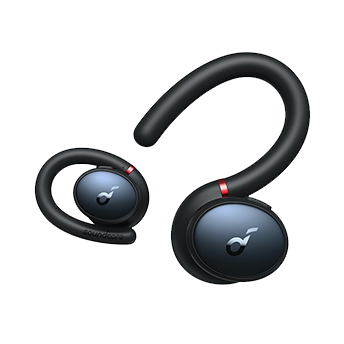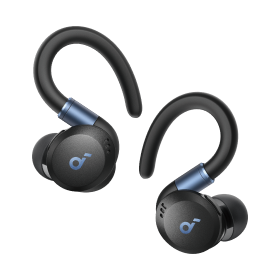Do Translation Earbuds Work? A Closer Look
Imagine traveling to Tokyo and seamlessly chatting with locals—even without knowing a word of Japanese. Sounds like magic, right? That's the promise of translation earbuds. Well, do translation earbuds work as seamlessly as they claim? According to a study by CSA Research, 76% of global consumers prefer buying from brands that speak their language, highlighting the demand for real-time translation. These AI-powered earbuds promise to break language barriers, making communication easier across the globe. As Google's CEO Sundar Pichai once said, “Language is the key to knowledge.”—so are these devices unlocking new possibilities or just a tech gimmick? Let's explore how they work, their accuracy, and when they're truly useful!

How Do Translation Earbuds Work?
Translation earbuds rely on a combination of advanced technologies to enable seamless communication across different languages. As interest in real-time translation continues to grow, these devices have evolved to provide faster and more accurate results. We've closely followed this innovation, exploring how they process speech, interpret meaning, and deliver translations in real-time.
- Speech Recognition
The first step in the translation process is speech recognition. Modern translation earbuds often incorporate advanced automatic speech recognition (ASR) systems, which analyze audio input in real time to identify spoken words. According to language technology experts, ASR has improved dramatically in the last few years, with some systems now achieving near-human performance under ideal conditions. Although background noise or unclear enunciation can still pose challenges, continual machine learning improvements help keep error rates lower than ever before.
- Natural Language Processing (NLP)
Once the earbuds' software recognizes speech, it transitions into the natural language processing stage. NLP is what enables the device to interpret the words within context, ensuring that translations capture the right meaning. With each update, developers refine the language models, making them better at handling idiomatic expressions, colloquialisms, and even certain slang terms.

- Machine Translation
After understanding the meaning behind a sentence, the earbuds translate it into the target language. Some earbuds rely on cloud-based machine translation engines (for instance, providers that handle massive amounts of language data every second), while others use more localized solutions. Advanced neural machine translation (NMT) has replaced older methods in many cases, leveraging large-scale data sets and deep learning to generate high-quality translations.
- Text-to-Speech (TTS)
Finally, once the translation is complete, a text-to-speech system vocalizes the result in the user's preferred language. Thanks to improvements in TTS, today's voices sound far more natural than earlier robotic-sounding translations. Many earbuds can even mimic a wide range of accents or speech styles for added realism.
Are Translation Earbuds Accurate?
While translation earbuds have made impressive leaps in recent years, do translation earbuds really work well enough for meaningful conversations? The answer is not a simple yes or no, let's look at the specific factors.
Language Pair Complexity
Certain language pairs, like English–Spanish or English–French, tend to be more accurate due to their large training data sets and relatively similar grammatical structures. Meanwhile, languages with distinctly different writing systems or fewer resources—such as English–Thai or English–Swahili—may produce less reliable translations. According to data from industry analysts, popular pairs can reach accuracy rates as high as 90–95% under favorable conditions, while less common ones might hover around 80% or lower.

Dialects and Regional Variations
Even within a single language, accents and local dialects can vary widely. For instance, Spanish differs significantly between Spain, Mexico, and Argentina in vocabulary, pronunciation, and expressions. Translation earbuds might stumble when faced with highly localized slang or thick accents. However, many are incorporating accent-specific training to gradually reduce errors.
Quality of the Translation Engine
Different translation apps use different AI models, and some are more advanced than others. For instance, apps like Google Translate or soundcore often provide more accurate translations than lesser-known services. In general, the better the AI technology behind the earbuds, the more precise the translations will be.
Background Noise
Noise from busy streets, cafés, or public events can affect speech recognition accuracy. External sound pollution might cause earbuds to misinterpret words, especially if the speaker isn't speaking clearly. Some earbuds integrate noise-cancellation features, which help filter out ambient sounds so the user's voice is more discernible.
Speech Clarity
The clearer you speak, the better the translation earbuds can function. Slang, mumbling, or unclear speech can confuse the software and affect accuracy. This is particularly important when it comes to real-time translation, where quick and accurate processing is needed. Speaking at a moderate pace, with clear articulation, offers the best chance for accurate results.
Software Updates and Data Connections
Because many earbuds rely on internet-based translation engines, a steady data connection is key. Poor connectivity might result in delayed or less accurate output. On the upside, cloud-based approaches allow for frequent software updates and ongoing improvements to translation quality.
According to recent research from language technology authorities, real-time translation accuracy can vary from around 70% to above 90%, depending on the scenario. While not flawless, the average user can often get the general meaning of the conversation, especially in widely spoken languages. In short, translation earbuds can be impressively precise in the right settings, but it's wise to approach them as a helpful tool—not a perfect substitute for human translators in every context.

Pros and Cons of Translation Earbuds
Every technology has its upsides and downsides, and translation earbuds are no exception. Here's an honest look from us.
Pros:
Real-Time Communication: One of the biggest advantages of translation earbuds is the ability to have real-time conversations with speakers of different languages. You no longer need to rely on slow, manual translation apps or struggle to communicate in a foreign language.
Portability: These earbuds are compact, lightweight, and easy to carry, making them ideal for travelers. Unlike bulky translation devices, earbuds can be tucked away in your pocket when not in use.
Hands-Free Operation: Many translation earbuds are fully hands-free, meaning you can speak naturally without needing to look at a screen or press buttons. This makes them ideal for conversations while you're walking, driving, or engaging in other activities.
Multiple Language Support: Some translation earbuds offer support for dozens of languages, making them an excellent tool for global communication. Whether you're chatting with a colleague from Japan or a new friend from Brazil, your earbuds can help bridge the gap.
Cons:
Battery Life: Translation earbuds rely on a constant Bluetooth connection to work, which can drain their battery. Continuous use may require frequent recharging, which can be inconvenient during long conversations or travel days.
Limited Contextual Understanding: Translation earbuds often struggle with understanding context or colloquial expressions. This means that while they can translate words accurately, they might miss the nuance of a conversation or misunderstand phrases that don't directly translate.
Potential Connectivity Issues: If the Bluetooth connection is weak or if you're in an area with poor internet access, the earbuds may not function as well as expected. Real-time translation often relies on stable Wi-Fi or cellular data to work effectively. While some models may offer offline modes, they are often less robust in terms of vocabulary and speed, which can impact the overall translation experience.
When Should You Use Translation Earbuds?
Translation earbuds are a fantastic bridge in many scenarios, but they aren't a magic fix for every language challenge. From our perspective, these devices shine in everyday, conversational contexts like travel, casual conversations, or social events, where you need quick communication. With real-time translations, they help reduce the anxiety of language barriers, making it easier to connect and interact.
However, there are also times when translation earbuds might not be the best choice. If you need precise terminology in medicine, law, or engineering, the risk of mistranslation goes up. In these cases, you might prefer a professional translator or a thoroughly tested, domain-specific tool. Besides, when multiple people are involved in a conversation and they speak different languages, translation earbuds may struggle to keep up with the flow and may miss some key details.
FAQs:
Can you use earbuds to translate?
Yes. Many translation earbuds rely on speech recognition and machine translation engines to interpret spoken words and deliver a translated version in your ear. By wearing them, you can have near real-time conversations with people who speak other languages, though accuracy may vary depending on factors like dialect and background noise.
Do earbuds translators require a subscription?
Some models do, and some don't. In many cases, you can enjoy basic translation capabilities without a subscription, but more advanced features or frequent updates may require a paid plan.
Which translation earbuds do not need a subscription?
Some translation earbuds, like the soundcore AeroFit 2, offer free translation features without requiring a subscription. You can access intelligent Q&A and simultaneous translation in over 100 languages directly through the app, making them a convenient and cost-effective option for language translation.
Do the translating earphones work?
Yes, translating earphones work by using AI and machine learning to process spoken language and provide real-time translations. They're ideal for basic conversations, although accuracy may vary based on the complexity of the language.
Conclusion
So, do translation earbuds work well enough for daily cross-language chats? We believe they do—especially for simple, everyday interactions or travel experiences. While the technology isn’t flawless and has its limitations, it continues to improve, offering more accurate translations every day. As AI-powered wireless earbuds evolve, they are becoming an increasingly valuable tool for bridging language gaps. If you’re looking for a quick and convenient way to communicate across languages, translation earbuds are definitely worth considering!





























































